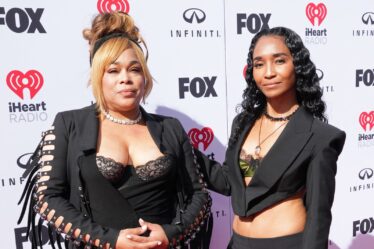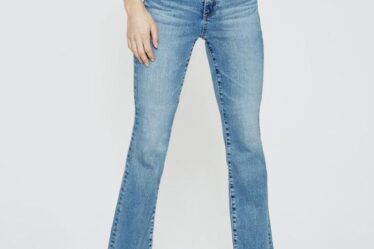
The fragrance business is booming.
In the US, the category is still growing steadily, following its pandemic-era jump. Already in 2023, sales are up 19 percent year-over-year, according to NPD, buoyed by behavioural changes in Gen-Z consumers and an uptick in interest in the Chinese market.
“It defies logic in how strong it continues to be,” Larissa Jensen, NPD vice president and beauty industry advisor, said of the sector.
While independent labels carved out a space for themselves in the market — and received attention and interest for doing so, like Puig’s 2022 acquisition of Byredo, it’s still designer fragrances from the likes of Dior and Gucci that dominate the market.
But typically, it’s not these brands’ or their parent companies that are predominantly reaping the benefits of their scent’s success. Most luxury label perfumes and colognes are manufactured and sold by a handful of beauty companies who have inked lengthy licensing deals with brands. L’Oréal, for example, has held the licences to Ralph Lauren and Giorgio Armani’s fragrance and beauty licences, respectively, since the ‘80s. Several companies, including Interparfums and Parlux, hinge their whole businesses on fragrance, operating licences for companies including Abercrombie, Coach and Guess (Interparfums) and Tommy Bahama and Jason Wu (Parlux).
These licences are big business, and can generate hundreds of millions of dollars in revenue for their operators, especially in the prestige segment, where margins are higher. L’Oréal’s Saint Laurent licence, which encompasses makeup, fragrance and skin care, is said to generate over $1 billion in annual sales. For Coty, which has held Gucci’s licence since 2016, fragrance made up 60 percent of its 2022 annual revenue.
As the sector booms, the wide web of fragrance licences is shifting. Most notably, on Feb. 3, Kering laid the groundwork to eventually take its beauty businesses in-house with the formation of its own beauty arm, Kering Beauté. Dolce & Gabbana, which previously licensed to Shiseido, took beauty in-house earlier this year. Estée Lauder, in a bid to keep Tom Ford’s beauty business (including its Oud Wood cologne), bought the company in November 2022.
More recent news, such as Coty’s December sale of the Lacoste licence back to the brand, which then inked a deal with Interparfums; Estee Lauder’s offloading of DKNY to Interparfums in 2022; the sales of Tommy Hilfiger’s licence to Give Back Beauty and Michael Kors to EuroItalia, in 2022 and 2021, has analysts talking again.
“There’s a lot of activity happening there because the industry is so hot,” said Jensen.
Read on for BoF’s debrief on the companies dominating the fragrance space backstage as it goes from strength to strength.
Who’s Behind Most of the World’s Perfumes?
For licence operators, beauty is a revenue driver, but for luxury brands, it’s a marketing tool. Fragrance is an entry point for consumers to first be acquainted with a brand, said Mario Ortelli, managing partner at luxury strategy advisory firm Ortelli&Co. For that reason, companies who own the licences often put big marketing budgets behind fragrances and tap celebrities for campaigns.
Licensing allows brands access to that marketing machine without having to navigate fragrance’s uniquely complicated development processes, supply chains and wholesale procedures on their own. The downside is that it often means giving up a little control over how the brand appears, and who reaps the benefits of brand equity.
“[Beauty conglomerates] have the manufacturing, the science, the technology, they have the distribution, the relationships,” said Korine Wolfmeyer, senior equity research analyst at Piper Sandler. “It’s just a lot simpler for them.”
Those who licence brands’ fragrances purchase them for set amounts, then handle manufacturing, marketing and wholesale. Competition for top labels is fierce as deals typically last for over ten years.
Still, the two biggest players — Chanel and LVMH’s Dior — keep their fragrance business in-house, which means they retain the profits, and complete control over image.
Going it alone doesn’t work for everyone. Burberry, for example, tried to take its scent in-house in 2013, ultimately choosing to link up with Coty in 2017.
“The risk in internalisation is if you don’t have a critical mass to attract the right talent in your organisation, or the critical mass to successfully partner with the distributors or producers,” said Ortelli.
Amid the activity in the space, companies are shaping up their specific strategies on how to approach the business, said Wolfmeyer. L’Oréal and Coty are doubling down on prestige: L’Oréal acquired licences to Valentino and Prada in 2018 and 2019, while Coty sold Lacoste, and instead has been pushing Gucci, Marc Jacobs, Burberry and Chloé. Estée Lauder is focussing on Jo Malone and its recent acquisition, Tom Ford, while Puig appears to be pivoting its attention from licences to its owned brands, which include Dries Van Noten and Nina Ricci.
Interparfums chief executive Jean Madar said the number of brands approaching the company about potential partnerships has ramped up in recent years. The company’s revenue has jumped too, from $714 million in revenue in 2019 to $1.09 billion in 2022. Due to growth, some brands are re-evaluating their partnerships, and others are looking to enter the space for the first time, he said.
“When brands see the fragrance business growing at a very fast pace, some of them are saying, are we with the right partner?” said Madar. “And fashion houses that have always been told they have time before entering this category now think it’s a good time for them — and we see them knocking on the door.”



